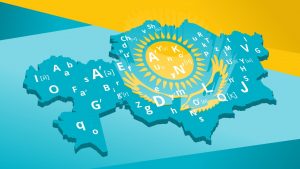Kazakh is a Turkic language that belongs to the Kipchak (or Western Turkic languages), closely related to the Nogai and Karakalpak languages and translate english to kazakh.
The Kazakh language is an agglutinative language (having a structure in which the dominant type of inflection is agglutination (“gluing”) of different suffixes or prefixes, each of which carries only one meaning). Also, the Kazakh language uses vowel harmony.
Kazakh is the native language of the people of Kazakhstan, who live in a vast territory from the Tien Shan mountains to the western coast of the Caspian Sea. Kazakh is the official state language of Kazakhstan, in which almost 10 million people speak it. More than a million people who know Kazakh live in the Uygur Autonomous Region. About 560,000 Kazakh speakers live in Russia, less than 200,000 live in Mongolia. Also, a large number of people live in other places in Central Asia (mainly in Uzbekistan) and in other parts of the former Soviet Union, including Afghanistan, Iran, Turkey and other countries.
Today, the Kazakh language uses the Cyrillic alphabet in Kazakhstan and Mongolia, while more than one million Kazakh speakers in China use the Arabic alphabet, similar to that previously used in the Uyghur language.
The oldest known written evidence of the language, closely related to Kazakh, was written in the Orkhon-Yenisei script (ancient Türkic runic script). However, it is not believed that any of these variants were direct predecessors of the Kazakh language. The modern Kazakh language in the course of historical development used versions of the Latin, Cyrillic and Arabic scripts.
During the 19th, the Kazakh language first had an Arabic script, then many poets educated in Islamic schools incited uprisings against Russia. In response, Russia opened secular schools and created a way to write Kazakh in Cyrillic, which was not well received. By 1917, Arabic writing had been reintroduced, even in schools and local government. In 1927, a Kazakh nationalist movement emerged, but was soon suppressed. At the same time, Arabic writing was banned, and the Latin alphabet began to be used in Kazakh writing. The Latin alphabet was in turn replaced by the Cyrillic alphabet in 1940.
Now the Kazakh language is an independent language, for the preservation and development of which, the Kazakh government is doing everything possible. After all, the preservation of the national language shows the culture and peculiarity of the Kazakh people.